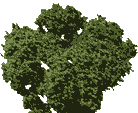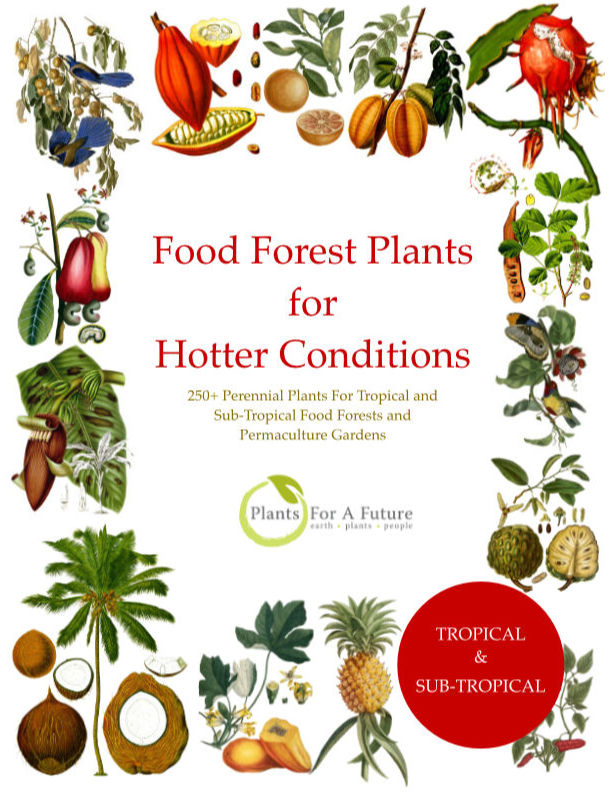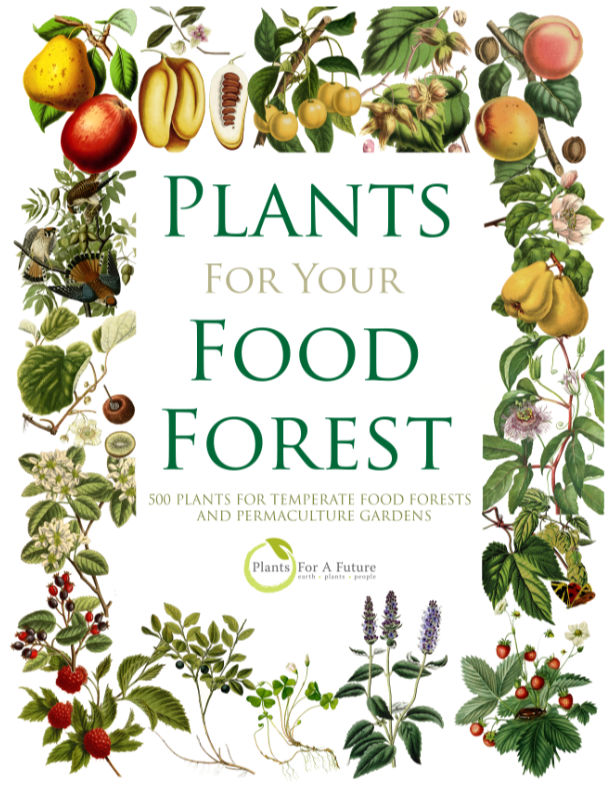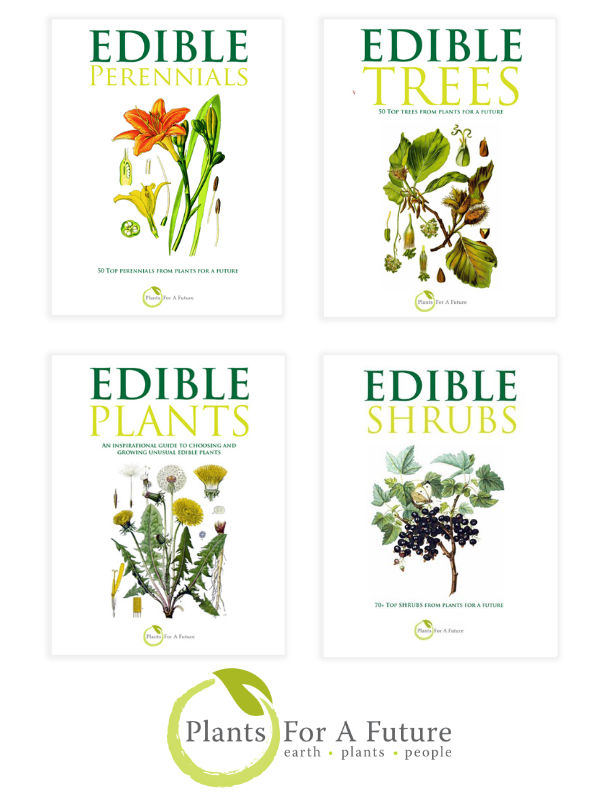Translate this page:
Summary
Rosa species,
Roses, with their diverse species, offer a wealth of culinary and medicinal possibilities. Many species of Rosa, including the Dog Rose (R. canina), Ramanas Rose (R. rugosa), and Damask Rose (R. damascena), produce edible hips and petals that can be used in a variety of ways. From teas to jams, desserts to garnishes, these roses are valued for their versatility and health benefits.
Edible parts include rose hips, the fruit that develops after the rose flower has bloomed. They are rich in vitamin C and antioxidants. Dog Rose, Ramanas Rose, and French Rose (R. gallica) are known for their edible hips. The hips are raw or cooked in jams, jellies, syrups, stews, sauces, teas, and soups or made into a syrupy drink. Rose petals are edible and can be used fresh or dried; they garnish salads, desserts, or flavour beverages like rose water or tea. Candied petals are used to decorate cakes and desserts. Rose water, made from distilled rose petals from species like Damask Rose, is used in Middle Eastern and South Asian cuisine to flavour sweets, drinks, and desserts. Flower buds make herbal teas or as a flavour in desserts and syrups. Both rose hips and petals contain antioxidants. Rose petal tea is a mild laxative used to soothe digestive issues.
Many Rose species grow in Mediterranean, arid, and semi-arid climates. Choose species and varieties adaptable to drought and heat. Ramanas Rose and Dog Rose are more drought-tolerant than others.
Harvesting: Rose hips are harvested from late summer to early autumn, and flowers from late spring to early autumn.
Physical Characteristics

 Rosa canina is a deciduous Shrub growing to 3 m (9ft) by 3 m (9ft) at a fast rate.
Rosa canina is a deciduous Shrub growing to 3 m (9ft) by 3 m (9ft) at a fast rate.
See above for USDA hardiness. It is hardy to UK zone 3. It is in flower from June to July, and the seeds ripen from October to December. The species is hermaphrodite (has both male and female organs) and is pollinated by Bees, flies, beetles, Lepidoptera (Moths & Butterflies), Apomictic (reproduce by seeds formed without sexual fusion). The plant is self-fertile.
It is noted for attracting wildlife.
Suitable for: light (sandy), medium (loamy) and heavy (clay) soils, prefers well-drained soil and can grow in heavy clay soil. Suitable pH: mildly acid, neutral and basic (mildly alkaline) soils. It can grow in semi-shade (light woodland) or no shade. It prefers moist or wet soil. The plant can tolerates strong winds but not maritime exposure.
UK Hardiness Map
US Hardiness Map
Synonyms
Plant Habitats
Woodland Garden Sunny Edge; Dappled Shade; Hedge; Bog Garden;
Edible Uses
Edible Parts: Flowers Fruit Seed
Edible Uses: Coffee Tea
Fruit - raw or cooked[2, 4, 13]. It can be used in making delicious jams, syrups etc[7]. The syrup is used as a nutritional supplement, especially for babies[238]. The fruit can also be dried and used as a tea[9, 12, 183]. Frost softens and sweetens the flesh[12]. The fruit is up to 30mm in diameter[200], but there is only a thin layer of flesh surrounding the many seeds[K]. Some care has to be taken when eating this fruit, see the notes above on known hazards. The seed is a good source of vitamin E[102], it can be ground and mixed with flour or added to other foods as a supplement. Be sure to remove the seed hairs[102]. The dried leaves are used as a tea substitute[46, 61, 183]. A coffee substitute according to another report[7]. Petals - raw or cooked[177]. The base of the petal may be bitter so is best removed[183]. Eaten as a vegetable in China[66]. The petals are also used to make an unusual scented jam[7].
References More on Edible Uses
Medicinal Uses
Plants For A Future can not take any responsibility for any adverse effects from the use of plants. Always seek advice from a professional before using a plant medicinally.
Antirheumatic Astringent Bach Cancer Carminative Diuretic Laxative Ophthalmic
Tonic Vermifuge Vitamin C
The petals, hips and galls are astringent, carminative, diuretic, laxative, ophthalmic and tonic[7, 9, 14, 21, 165]. The hips are taken internally in the treatment of colds, influenza, minor infectious diseases, scurvy, diarrhoea and gastritis[238]. A syrup made from the hips is used as a pleasant flavouring in medicines and is added to cough mixtures[238]. A distilled water made from the plant is slightly astringent and is used as a lotion for delicate skins[7]. The seeds have been used as a vermifuge[7]. The plant is used in Bach flower remedies - the keywords for prescribing it are 'Resignation' and 'Apathy'[209]. The fruit of many members of this genus is a very rich source of vitamins and minerals, especially in vitamins A, C and E, flavanoids and other bio-active compounds. It is also a fairly good source of essential fatty acids, which is fairly unusual for a fruit. It is being investigated as a food that is capable of reducing the incidence of cancer and also as a means of halting or reversing the growth of cancers[214]. Ascorbic acid in Dog Rose shells (vitamin C, 0.2 to 2.4%).
References More on Medicinal Uses
The Bookshop: Edible Plant Books
Our Latest books on Perennial Plants For Food Forests and Permaculture Gardens in paperback or digital formats.

Edible Tropical Plants
Food Forest Plants for Hotter Conditions: 250+ Plants For Tropical Food Forests & Permaculture Gardens.
More

Edible Temperate Plants
Plants for Your Food Forest: 500 Plants for Temperate Food Forests & Permaculture Gardens.
More

More Books
PFAF have eight books available in paperback and digital formats. Browse the shop for more information.
Shop Now
Other Uses
Hedge Hedge
Agroforestry uses: Roses are beneficial in agroforestry systems as they can provide ground cover, attract pollinators, and improve biodiversity. Certain species are also used for hedges and windbreaks. Plants make a dense and stock-proof hedge, especially when trimmed[186]. 1. Nectary - Flowers rich in nectar and pollen:
Yes – Roses produce flowers rich in nectar and pollen, making them excellent for attracting bees, butterflies, and other pollinators.
2. Wildlife - Food (Fruit, Seeds, Leaf litter, Shelter, Nesting, Roosting):
Yes – The hips (fruit) of many rose species are a food source for birds and mammals. The dense structure of rose bushes provides good shelter and nesting spots for birds and small animals.
3. Invertebrate Shelter (Overwintering sites, Leaf litter, Groundcover):
Yes – The rough stems, leaf litter, and dense growth of rose bushes can provide overwintering sites for beneficial invertebrates.
4. Pest Confuser (Smell):
No – While roses are fragrant, they are not typically known to confuse pests with their scent.
Special Uses
Attracts Wildlife Hedge Hedge Scented Plants
References More on Other Uses
Cultivation details
Succeeds in most soils[11, 200]. Grows well in heavy clay soils. Prefers a circumneutral soil and a sunny position with its roots in the shade[11, 200]. When grown in deep shade it usually fails to flower and fruit[186]. Succeeds in wet soils but dislikes water-logged soils or very dry sites[186]. Tolerates maritime exposure[186]. The fruit attracts many species of birds, several gall wasps and other insects use the plant as a host[186] A very polymorphic species, it is divided into a great number of closely related species by some botanists[1, 17]. The leaves, when bruised, have a delicious fragrance[245]. The flowers are also fragrant. Grows well with alliums, parsley, mignonette and lupins[18, 20]. Garlic planted nearby can help protect the plant from disease and insect predation[18, 20]. Grows badly with boxwood[18]. Hybridizes freely with other members of this genus[80]. Plants in this genus are notably susceptible to honey fungus[200]. Rose hips are typically harvested in late summer to early autumn, usually from August to October (Northern Hemisphere), depending on the species.
Roses usually flower from late spring to early autumn, typically between May and September (Northern Hemisphere).
Growth rates vary by species, but many roses can grow moderately fast, reaching maturity within 2 to 3 years, depending on the care and conditions provided. Some species of roses are self-fertile, while others require cross-pollination with different varieties for optimal fruit (hip) production.
References Carbon Farming Information and Carbon Sequestration Information
Temperature Converter
Type a value in the Celsius field to convert the value to Fahrenheit:
Fahrenheit:
The PFAF Bookshop
Plants For A Future have a number of books available in paperback and digital form. Book titles include Edible Plants, Edible Perennials, Edible Trees,Edible Shrubs, Woodland Gardening, and Temperate Food Forest Plants. Our new book is Food Forest Plants For Hotter Conditions (Tropical and Sub-Tropical).
Shop Now
Plant Propagation
Seed. Rose seed often takes two years to germinate. This is because it may need a warm spell of weather after a cold spell in order to mature the embryo and reduce the seedcoat[80]. One possible way to reduce this time is to scarify the seed and then place it for 2 - 3 weeks in damp peat at a temperature of 27 - 32°c (by which time the seed should have imbibed). It is then kept at 3°c for the next 4 months by which time it should be starting to germinate[80]. Alternatively, it is possible that seed harvested 'green' (when it is fully developed but before it has dried on the plant) and sown immediately will germinate in the late winter. This method has not as yet(1988) been fully tested[80]. Seed sown as soon as it is ripe in a cold frame sometimes germinates in spring though it may take 18 months. Stored seed can be sown as early in the year as possible and stratified for 6 weeks at 5°c[200]. It may take 2 years to germinate[200]. Prick out the seedlings into individual pots when they are large enough to handle. Plant out in the summer if the plants are more than 25cm tall, otherwise grow on in a cold frame for the winter and plant out in late spring. Cuttings of half-ripe wood with a heel, July in a shaded frame. Overwinter the plants in the frame and plant out in late spring[78]. High percentage[78]. Cuttings of mature wood of the current seasons growth. Select pencil thick shoots in early autumn that are about 20 - 25cm long and plant them in a sheltered position outdoors or in a cold frame[78, 200]. The cuttings can take 12 months to establish but a high percentage of them normally succeed[78]. Division of suckers in the dormant season. Plant them out direct into their permanent positions. Layering. Takes 12 months[11].
Other Names
If available other names are mentioned here
Common briar, Eglantier, Hundsrose, Escaramujo, Kusburnu, Maces, Peterlenga, Pittellenga, Rosa selvatico, Shipka, Silan, Silank, Sipurak, Sverboritki, Tabgha, Ward barri,
Native Range
TEMPERATE ASIA: Afghanistan, Cyprus, Iran, Iraq, Israel, Lebanon, Syria, Turkey, Russian Federation-Ciscaucasia (Ciscaucasia), Armenia, Azerbaijan, Georgia, Russian Federation (Dagestan), Tajikistan TROPICAL ASIA: Pakistan EUROPE: Denmark, Finland, United Kingdom, Ireland, Norway, Sweden, Austria, Belgium, Switzerland, Czech Republic, Germany, Hungary, Netherlands, Poland, Slovakia, Estonia, Moldova, Ukraine (incl. Krym), Albania, Bulgaria, Bosnia and Herzegovina, Greece (incl. Crete), Croatia, Italy (incl. Sardinia, Sicily), North Macedonia, Romania, Serbia, Slovenia, Spain, France (incl. Corsica), Portugal AFRICA: Spain (Canarias), Portugal (Madeira Islands), Algeria, Morocco, Tunisia
Weed Potential
Right plant wrong place. We are currently updating this section.
Please note that a plant may be invasive in one area but may not in your area so it's worth checking.
Conservation Status
IUCN Red List of Threatened Plants Status :

| Related Plants
|
| Latin Name | Common Name | Habit | Height | Hardiness | Growth | Soil | Shade | Moisture | Edible | Medicinal | Other |
| Acaenia anserinifolia | Pirri-Pirri Bur | Perennial | 0.1 |
5-9
| F | LMH | SN | M | 1 | 1 | 3 |
| Aciphylla squarrosa | Speargrass | Perennial | 2.5 |
4-8
| | LM | N | DM | 2 | 0 | 1 |
| Adenostoma fasciculatum | Greasewood | Shrub | 3.0 |
7-10
| | LMH | N | DM | 0 | 1 | 2 |
| Adenostoma sparsifolium | Redshank | Shrub | 6.0 |
7-10
| | LMH | N | DM | 1 | 1 | 2 |
| Agrimonia eupatoria | Agrimony, Churchsteeples | Perennial | 0.6 |
0-0
| | LMH | SN | DM | 2 | 3 | 1 |
| Agrimonia parviflora | Harvestlice | Perennial | 2.0 |
-
| | LMH | SN | DM | 0 | 2 | |
| Agrimonia pilosa | Hairy Agrimony | Perennial | 0.6 |
-
| | LMH | SN | DM | 2 | 3 | |
| Agrimonia striata | Roadside agrimony | | 0.0 |
0-0
| | LMH | SN | M | 0 | 2 | 0 |
| Alchemilla alpina | Alpine Lady's Mantle, Mountain Lady's Mantle | Perennial | 0.2 |
3-7
| M | LMH | SN | DM | 2 | 3 | |
| Alchemilla mollis | Lady's-mantle | Perennial | 0.6 |
3-8
| M | LMH | FSN | M | 0 | 0 | 3 |
| Alchemilla xanthochlora | Lady's Mantle | Perennial | 0.3 |
0-0
| | LMH | SN | DM | 2 | 3 | 3 |
| Amelanchier alnifolia | Saskatoon, Saskatoon serviceberry, Serviceberry | Shrub | 4.0 |
2-7
| M | LMH | SN | M | 5 | 2 | 3 |
| Amelanchier alnifolia cusickii | Cusick's Serviceberry | Shrub | 3.0 |
0-0
| | LMH | SN | M | 4 | 1 | 0 |
| Amelanchier alnifolia semiintegrifolia | Pacific Serviceberry | Shrub | 3.0 |
0-0
| S | LMH | SN | M | 5 | 1 | 1 |
| Amelanchier arborea | Downy Serviceberry, Alabama serviceberry, Juneberry, Common Serviceberry, Downy Serviceberry | Tree | 10.0 |
5-8
| S | LMH | SN | M | 3 | 1 | 2 |
| Amelanchier asiatica | Korean Juneberry | Tree | 8.0 |
4-8
| | LMH | SN | M | 3 | 0 | |
| Amelanchier bartramiana | Oblongfruit serviceberry | Shrub | 3.0 |
4-8
| | LMH | SN | M | 3 | 0 | 0 |
| Amelanchier basalticola | Dwarf Service-berry | Shrub | 3.0 |
4-8
| | LMH | SN | M | 4 | 0 | 0 |
| Amelanchier canadensis | Juneberry, Canadian serviceberry, Serviceberry Downy, Shadblow, Shadbush, Serviceberry | Shrub | 6.0 |
4-7
| M | LMH | SN | M | 4 | 1 | 4 |
| Amelanchier confusa | | Shrub | 3.0 |
4-8
| | LMH | SN | M | 5 | 0 | 0 |
| Amelanchier humilis | Low serviceberry | Shrub | 1.8 |
4-8
| | LMH | SN | M | 3 | 0 | |
| Amelanchier huroensis | | Tree | 6.0 |
5-9
| | LMH | SN | M | 3 | 0 | |
| Amelanchier interior | Pacific serviceberry | Tree | 9.0 |
5-9
| | LMH | SN | M | 3 | 0 | |
| Amelanchier intermedia | June berry, | Shrub | 6.0 |
4-8
| | LMH | SN | M | 3 | 0 | 0 |
| Amelanchier laevis | Allegheny Shadberry, Allegheny serviceberry, Smooth Serviceberry | Shrub | 9.0 |
5-8
| M | LMH | SN | M | 5 | 1 | 2 |
| Amelanchier lamarckii | Apple Serviceberry | Shrub | 6.0 |
3-3
| | LMH | SN | M | 5 | 0 | 0 |
| Amelanchier obovalis | Southern Juneberry, Coastal serviceberry | Tree | 1.5 |
5-9
| | LMH | SN | M | 3 | 0 | 1 |
| Amelanchier ovalis | Snowy Mespilus, Dwarf Garden Serviceberry | Shrub | 5.0 |
5-7
| S | LMH | N | M | 2 | 0 | |
| Amelanchier ovalis integrifolia | | Shrub | 4.0 |
5-9
| | LMH | SN | M | 2 | 0 | |
| Amelanchier pallida | Pale Serviceberry | Shrub | 4.0 |
-
| | LMH | SN | M | 3 | 1 | |
|
|
Growth: S = slow M = medium F = fast. Soil: L = light (sandy) M = medium H = heavy (clay). pH: A = acid N = neutral B = basic (alkaline). Shade: F = full shade S = semi-shade N = no shade. Moisture: D = dry M = Moist We = wet Wa = water.
Now available:
Food Forest Plants for Mediterranean Conditions
350+ Perennial Plants For Mediterranean and Drier Food Forests and Permaculture Gardens.
[Paperback and eBook]
This is the third in Plants For A Future's series of plant guides for food forests tailored to
specific climate zones. Following volumes on temperate and tropical ecosystems, this book focuses
on species suited to Mediterranean conditions—regions with hot, dry summers and cool, wet winters,
often facing the added challenge of climate change.
Read More
Expert comment
Author
L.
Botanical References
1117200
Links / References
For a list of references used on this page please go here
Readers comment
| Add a comment |
|
If you have important information about this plant that may help other users please add a comment or link below. Only comments or links that are felt to be directly relevant to a plant will be included. If you think a comment/link or information contained on this page is inaccurate or misleading we would welcome your feedback at [email protected]. If you have questions about a plant please use the Forum on this website as we do not have the resources to answer questions ourselves.
* Please note: the comments by website users are not necessarily those held by PFAF and may give misleading or inaccurate information.
To leave a comment please Register or login here All comments need to be approved so will not appear immediately.
|
|